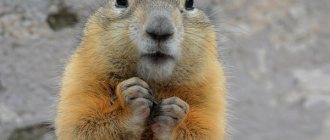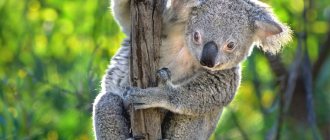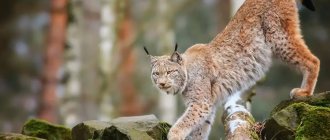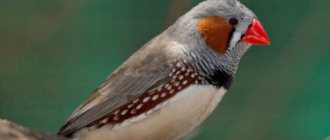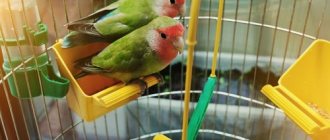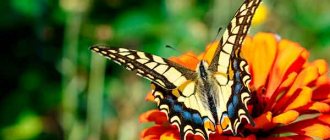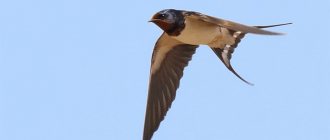Review author: “ZooVita”
In this article you will find information about gophers, why they are interesting, where gophers live, what they look like and eat, photos of gophers and much more. The gopher is a representative of the squirrel genus. These rodents communicate with each other using special sounds. Thanks to this peculiar communication, the word “gopher” appeared, from the word “susati”, which is translated from the Old Slavonic “to hiss”.
Due to the ability of this small rodent to carry dangerous diseases such as plague and damage agricultural land, it began to be pursued by varminters, rodent hunters. This sport hunting led to the extinction of some representatives of the species. They were even included in the Red Book.
Description of the animal gopher
The average size of a gopher is approximately from 15 to 27 cm, but there are also larger individuals, measuring 40 cm. The tail is short, less than half the body of the rodent. The weight of the mammal can reach about one and a half kilograms. The female is always lighter and smaller than the male.
The hind legs of the rodent are longer than the front ones. The limbs have sharp claws with which the animal can dig a hole for itself.
The gopher's head is small and elongated in shape. The ears are almost invisible, as they are covered with fluff. The eyes have many lacrimal glands, due to which the cornea is protected from dust.
Gophers have cheek pouches that are filled with food, which the animal stores in its burrow.
Wool covers the gopher's body. In summer, the fur is short and stiff, which promotes normal thermoregulation and prevents overheating. In winter, on the contrary, the fur becomes long and dense to retain heat. The color of the coat depends on the specific type of animal and the time of year.
Gopher lifestyle
In the steppe, the gopher can be seen from afar, since this animal has the ability to look into the distance, sensing danger. Burrows are dug at a depth of about three meters. In a mink the animal hides from danger and sleeps. Some subspecies make a pantry in their burrows where they store food supplies.
Basically, gophers live in a flock and it is rare to see a single individual. A flock usually consists of at least ten individuals. This does not prevent each gopher from having a separate hole with its own territory, so the gopher settlement resembles a small town.
Gophers are most active in the early morning or late evening, as they do not like the intense heat of the day. They do not stray far from their burrow in order to respond to danger in time.
Usually, when the family is feeding, several representatives of the flock form a kind of patrol around the perimeter and look around for any threat. Due to poor eyesight, animals try to climb onto any hills or hillocks.
Habitat of gophers
The gopher animal is often found in temperate latitudes. This is the forest-tundra and steppes of the North. Open landscapes attract mammals. Gophers live on the ground, and the soil of the ground determines the depth of the hole that the gopher will dig. In sand, the mammal can dig a hole 15 meters long, and in clay soil no more than seven.
Looking deep into the hole, you can see the nesting chamber covered with leaves and grass. There are usually small mounds in front of the entrance to the gopher's home.
Where do they live?
Natural habitats are mainly associated with the territory of the Euro-Asian continent. In addition, gophers are found in North America. Most often they are found in temperate latitudes, in tundra, forest-tundra, steppes, meadow-steppes, meadows, etc. Moreover, these animals can be found without problems in mountainous regions, as well as in deserts and semi-deserts. They prefer to lead a above-ground-underground lifestyle, choosing for this open areas located on hills. These animals can be found near populated areas, within railways, in abandoned areas, at abandoned national economic facilities, etc.
How a gopher hibernates
The gopher's hibernation lasts longer than that of many other animals. The length of the hibernation period depends on the climatic characteristics of the habitat.
In cold climates, even June can be the beginning of hibernation if the mammal has managed to accumulate the required amount of fat, and if there is enough of it, then hibernation continues throughout the winter. This does not apply to females who need to feed their offspring.
Most often, after hibernation during the summer, gophers wake up in September to stock up on fat for the winter. The winter months pass in a sleep again, and with the appearance of the first spring sun rays and young vegetation, the animals emerge from their burrows.
Gopher nutrition
The gopher is an omnivore, since in addition to plant food, its diet also contains animal food. But predominantly plant foods make up the main diet of the rodent.
Some species eat not only stems, leaves and fruits, but also plant roots. By doing this, they harm various grain crops. The animal stores dry grass, seeds of various grasses and trees, and seeds of cereal crops. Tundra gophers eat moss.
The animal diet of gophers consists of caterpillars, ground beetle flies, locusts, midges, grasshoppers, worms, chafer larvae, eggs and chicks of an unattended nest. Once in a person’s garden, the animal digs up vegetables and flower bulbs.
We need to prepare!
Animals spend a lot of time preparing for hibernation, because they not only need to stock up on nutrients, but also arrange their home
so that a certain microclimate is maintained there.
Rodent burrows can be up to 3 meters deep. Grains, nuts and seeds are stored there, which will help maintain vitality. An entire family of rodents can overwinter in one shelter.
Every hollow, den, and burrow must be safe and inaccessible to predators, and the temperature must remain above zero, even if there is severe frost outside. The temperature in the home will correspond to the body temperature of many hibernating animals. So it's not that simple.
The easiest situation is for the dalia fish, which does not need to take care of its home. She feels great in the frozen lake. The unique structure of the tissues protects this fish from freezing, and when the ice melts, it continues its life activity.
Bears are perhaps the most picky in terms of housing. These comrades can simply bury themselves in the leaves, and in winter they are covered with snow. So be careful, because one of the snowdrifts may turn out to be a sleeping bear, and they do not sleep so soundly. It will be especially bad for you if you come across a clubfoot closer to spring, because he will be very hungry. Probably because their sleep is not deep, bears are not particularly worried about a safe home. Everyone already knows how unsafe it is to wake them up in winter.
By the way, you should read ““. At the same time, you will find out how animals react to tickling.
Mating season of gophers
Despite the emaciated appearance of the animals, their rutting period begins immediately after emerging from hibernation. There are also conflicts between males for the favor of the female.
After fertilization, a gestation period begins, lasting about a month. How many newborns there will be depends on the specific habitat and how well the female ate during gestation.
Newborns feed on mother's milk for six weeks, and after a couple of weeks they gain the ability to see. After a month they feed on their own, but live in the hole for at least twelve weeks.
The mother protects the babies from strangers; if an uninvited guest appears, she fluffs her tail to appear larger and terrify the enemy. Also, the mother digs holes for her offspring, so that after three months the young animals can move there.
Interesting Facts
At first glance, gophers are ordinary and unremarkable rodents. But their behavior and social structure can surprise even skeptical people.
Interesting Facts:
- If a snake attacks a nesting hole, the female stands up to protect her offspring, regardless of the danger. She blocks the entrance to the hole, screams, waves her tail and makes throws towards the snake. Even after being bitten, the female continues to protect her children and bravely rushes at the enemy.
- Young gophers are the last to fall asleep. Adult males are the first to go into hibernation.
- Adult gophers develop immunity to snake venom.
- The territory of the colony is always protected by gopher guards. When danger arises, the animals emit a piercing whistle, which serves as a signal to other animals.
- Gophers talk to each other using different volumes and tones, sometimes barely audible to humans. So one animal can inform another about danger or mark its territory.
- During hibernation, gophers fall into a deep sleep. In this state, some subspecies are able to survive sub-zero temperatures.
- Some subspecies can hibernate up to 9 months of the year.
- Caring mothers build additional burrows for growing offspring near feeding areas.
- The mouth of gophers is protected by folds of skin that prevent soil from entering the oral cavity while digging holes.
- The smallest gopher weighs only 150 g, and the largest member of the family can gain weight up to one kilogram.
Life expectancy of gophers
Gophers in the wild usually live short lives, on average two to three years. The reason may be a late spring, predators and even cannibalism, which occurs in the female due to stress, as well as lack of food and water.
Despite the fact that rodents are carriers of infectious diseases and cause damage to agricultural land, their existence is not useful. The gopher brings certain benefits to nature, namely:
- The gopher eats some insect pests, thereby reducing their population.
- Thanks to the burrows dug by mammals, the permeability of soil moisture and air increases.
- There is an increase in rare species of birds of prey that feed on rodents
Gophers are an integral element of the food chain, ensuring the existence of other living creatures. If they disappear, the number of other animal species will also decrease.
Natural enemies
According to statistics, more than 70% of young animals die in the first year of life. In most cases, the causes of death are long winters, soil freezing, insufficient supplies in the pantry, anthropogenic factors and predatory animals.
In nature, gophers have a lot of enemies; they are hunted by all predatory animals and birds.
The main danger comes from foxes, ferrets, weasels, stoats, domestic dogs and hawks. Most predatory animals hunt gophers in the summer, but foxes and ferrets can dig rodents out from under the snow.

